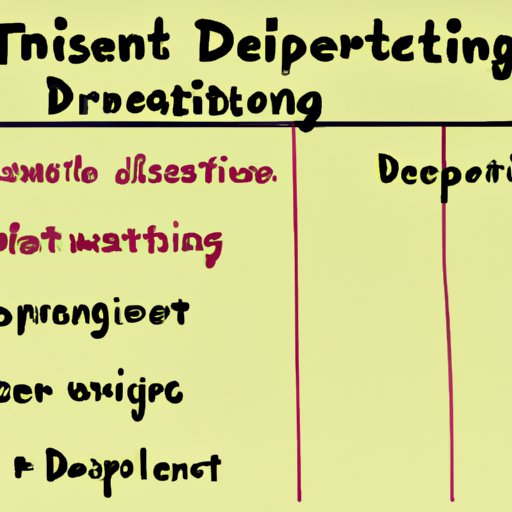Introduction
Setting goals is an essential part of living a productive and successful life. It gives you direction and clarity on what you want to achieve and provides motivation to keep going when things get tough. But it can be difficult to know where to start when it comes to goal setting. This article will provide a comprehensive guide to help you set goals in life.
Definition of Goal Setting
Goal setting is the process of identifying something that you want to accomplish and creating a plan to achieve it. It involves identifying short-term and long-term goals and making sure that you have the resources and support necessary to make them happen. According to the American Psychological Association, goal setting is “a formal process for personal planning that includes clarifying what is important to you, establishing specific, measurable objectives, and developing realistic action plans for achieving those goals.”
Overview of Benefits of Goal Setting
There are many benefits to setting goals in life. It can help you stay focused and motivated, give you a sense of purpose, and provide structure and discipline. According to a study published in the Journal of Personality and Social Psychology, people who set goals and work towards them are more likely to experience greater self-confidence and a greater sense of accomplishment. In addition, setting goals can help you manage stress, as it gives you something to focus on other than the stressors in your life. Finally, setting goals can help you become more organized, as it can help you prioritize tasks and manage your time more effectively.
Identifying Your Core Values
One of the first steps in setting goals is to identify your core values. Core values are the beliefs and principles that guide your decisions and actions. They determine how you interact with the world and what you consider to be important. Identifying your core values helps you set meaningful goals that align with your values and passions. This will ensure that you remain focused and motivated throughout the goal-setting process.

Explanation of Why It Is Important to Identify Core Values
It is important to identify your core values because they will act as a compass to guide you through the goal-setting process. Knowing your core values will help you create goals that are meaningful and will increase your chances of success. According to Dr. Robert E. Quinn, author of Deep Change: Discovering the Leader Within, “Core values are the essence of who we are. We cannot know where we are going until we know what matters most to us.”
Tips on How to Identify Core Values
There are several ways to identify your core values. One way is to think about the activities that bring you joy and fulfillment. What do you enjoy doing? What makes you feel energized and alive? Another way is to identify the qualities that you admire in yourself and others. What qualities do you value most? Finally, you can think about the people in your life who have had the greatest impact on you. What qualities do they possess that you admire? Once you have identified your core values, use them to guide your goal-setting process.
Creating a Vision Board
Another step in setting goals is to create a vision board. A vision board is a collection of images and words that represent your goals and dreams. It serves as a visual reminder of what you want to achieve and provides motivation to keep going. Creating a vision board can also help you identify new goals and ideas that you may not have thought of before.
Explanation of What a Vision Board Is
A vision board is a tool used to visualize your goals and dreams. It is typically made up of images, quotes, affirmations, and other inspiring materials that represent what you want to achieve. The idea behind a vision board is to create a physical representation of your goals so that you can stay focused and motivated on your journey to achieving them.

Tips on How to Create a Vision Board
The first step in creating a vision board is to identify your goals and dreams. Think about what you want to achieve in the short-term and long-term. Once you have identified your goals, gather images, quotes, and other materials that represent them. You can find these materials online or in magazines. Finally, arrange the materials on a poster board or other surface and hang it somewhere you will see it every day.

Breaking Down Goals into Smaller Steps
Once you have identified your goals and created a vision board, the next step is to break them down into smaller steps. Breaking down big goals into smaller steps can help you focus on the tasks that need to be completed and make them more manageable. It also allows you to track your progress and adjust your plan if needed.
Explanation of Why It Is Important to Break Down Goals
It is important to break down goals into smaller steps because it can help you stay organized and motivated. Breaking down goals into smaller steps makes them easier to manage and increases the likelihood of success. According to a study published in the Journal of Applied Psychology, people who break down their goals into smaller steps are more likely to achieve them than those who don’t.
Tips on How to Break Down Goals
The first step in breaking down goals is to identify the end result. What do you want to achieve? Once you have identified the end result, brainstorm the steps that need to be taken to get there. Make sure to include both short-term and long-term goals. Finally, prioritize the tasks and create a timeline to help you stay on track.
Setting Deadlines & Tracking Progress
Once you have broken down your goals into smaller steps, the next step is to set deadlines and track your progress. Setting deadlines will help you stay focused and motivated and ensure that you stay on track. Tracking your progress will also help you stay motivated, as it will allow you to measure your progress and make adjustments if needed.

Explanation of Why It Is Important to Set Deadlines and Track Progress
It is important to set deadlines and track progress because it will help you stay focused and motivated. Setting deadlines will help you stay on track and ensure that you don’t get sidetracked by other tasks. Tracking progress will also help you stay motivated, as it will allow you to measure your progress and make adjustments if needed.

Tips on How to Set Deadlines and Track Progress
The first step in setting deadlines and tracking progress is to identify your deadlines. When do you want to achieve each goal? Once you have identified your deadlines, create a timeline to help you stay on track. Finally, track your progress regularly and make adjustments as needed.
Celebrating Accomplishments
The final step in setting goals is to celebrate your accomplishments. Celebrating your successes will help you stay motivated and remind you why you started in the first place. It will also provide a sense of satisfaction and fulfillment that will keep you going even when things get tough.
Explanation of Why It Is Important to Celebrate Accomplishments
It is important to celebrate your accomplishments because it will help you stay motivated and focused on your goals. Celebrating your successes will also provide a sense of satisfaction and fulfillment that will keep you going even when things get tough. According to a study published in the Journal of Applied Psychology, people who celebrate their successes are more likely to achieve their goals than those who don’t.
Tips on How to Celebrate Accomplishments
There are several ways to celebrate your accomplishments. One way is to reward yourself with something special when you reach a milestone. This could be anything from a night out with friends to a day off work. Another way is to take time to reflect on your successes. Take a few minutes each day to think about what you have achieved and how far you have come. Finally, share your successes with others. Tell your friends, family, and colleagues about your accomplishments and let them help celebrate with you.
Conclusion
Setting goals in life can be a daunting task, but it doesn’t have to be. By following this comprehensive guide, you can set meaningful goals and stay motivated and focused on achieving them. Start by identifying your core values, creating a vision board, breaking down your goals into smaller steps, setting deadlines and tracking progress, and celebrating your accomplishments. With a little bit of effort, you can achieve any goal you set for yourself.
(Note: Is this article not meeting your expectations? Do you have knowledge or insights to share? Unlock new opportunities and expand your reach by joining our authors team. Click Registration to join us and share your expertise with our readers.)
